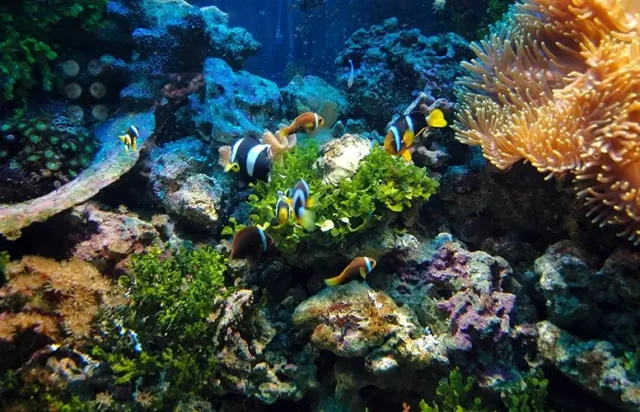
The Natural History Museum in the UK reports that the coral population now occupies a 50% smaller area than it did in 1957. Some coral reefs have experienced a particularly severe population decline, whereas other places remain relatively auspicious for coral growth. Read this article to learn more about the fate of coral reefs in different locations around the world.
Severely impacted coral reefs
While it is hardly possible to find coral reefs that are unaffected by numerous factors, mostly caused by human activities ranging from pollution and coastal development to an increase in water temperatures, some coral populations are literally struggling to survive.
The Florida Reef, United States
The only living coral barrier reef that can be found in the continental United States is suffering from the detrimental effects of coral bleaching, which destroyed nearly 98% of its population.
The Great Barrier Reef, Australia
The largest coral reef in the world is also experiencing one of the greatest depopulation, mainly due to massive bleaching events in 2016, 2017, and 2020, which caused nearly a 50% loss of corals.
The Mesoamerican Reef, Central America
The second-largest barrier reef in the world, the Mesoamerican Reef, extends approximately 1,000 kilometres along the shores of Belize, Guatemala, Mexico, and Honduras. Since 1998, its coral population has shrunk twice.
Coral reefs surviving despite changing environment
Despite the rapid population decline, some coral reefs tend to be more resilient to harmful factors. This is particularly true for reefs with diverse and hardy coral species with a connection to other reefs through the ocean, which allows them to receive more coral larvae and replenish the population. Undoubtedly, conservation measures also play a big role in the survival of such reefs.
The Palau Reef, Micronesia
While the Palau Reef, covering an area comparable to the size of New York City, is under strict governmental protection that pays significant effort to its conservation, the reef has also shown natural resilience to acidification and bleaching.
The Red Sea Coral Reef
Although this reef is vulnerable to major harmful factors such as overfishing, pollution, and coastal development, its population is highly diverse and features great resilience to changes in temperatures.
The Moorea Reef, French Polynesia
The Moorea Reef had lost almost its entire population due to the dominance of crown-of-thorns sea stars feeding on coral polyps. However, in just eight years, the reefs were repopulated, achieving more than 80% of the sea floor coverage.
Preserving marine life with Aquaforest
The statistical predictions for the coral population range, but all of them are negative, expecting even up to a 90% loss by 2030 if no drastic actions to address climate change and pollution are taken. Aquaforest, the manufacturer of high-quality marine aquarium supplies, supports oceanariums around the world in their attempt to preserve the diversity of coral species.





